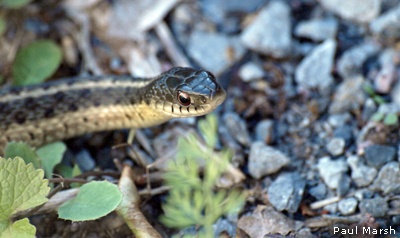We have much more to do and your continued support is needed now more than ever.
7 Jaw-Dropping Facts About What Snakes Really Eat
If you’ve played our irresistibly silly mobile app for 2 to 5 year olds, What Did Snakey Eat?, you know that kids get to help Sammy the Skunk figure out what his friend Snakey ate by matching the shape in Snakey’s belly to one of a few suggested objects. Did he eat an umbrella? A tricycle? Or even a giraffe?
Which might lead kids to wonder what snakes REALLY eat. We’ve compiled some info on snakes and their diets to help fulfill your wild curiosity!
7 Amazing Facts About Snakes

- The heaviest snake is the green anaconda. It can weigh more than 500 pounds—as much as a black bear or a lion!
- The longest captured snake on record was almost as long as a school bus. The 32-foot python was discovered in Indonesia in 1912.
- All snakes eat meat, including animals like lizards, other snakes, small mammals, birds, eggs, fish, snails, or insects.
- The size of a snake’s prey depends on how big it is. The smallest snake in the world, the Barbados thread snake, eats ant and termite eggs.
- The menu for bigger snakes, like pythons and anacondas, includes animals like deer, pigs, goats, and even jaguars and crocodiles.
- Snakes must swallow their prey whole because they can’t use their teeth to chew or tear their food. They have very flexible lower jaws that allow them to do this, even if the meal is bigger than their own head!
- How often a snake eats depends on how big it is, what kind of food it eats, how old it is, and when food is available. The emerald tree boa only eats once every few months. Other snakes eat once or twice a week.





















